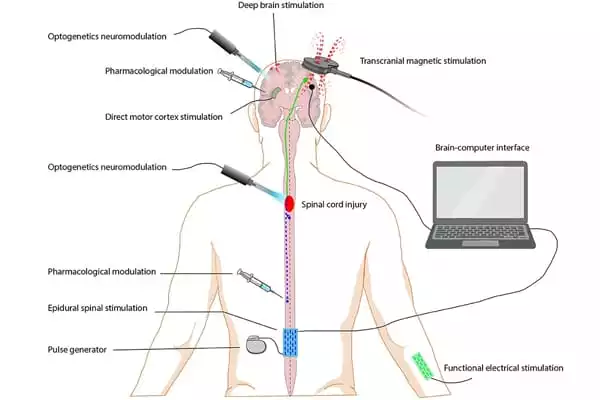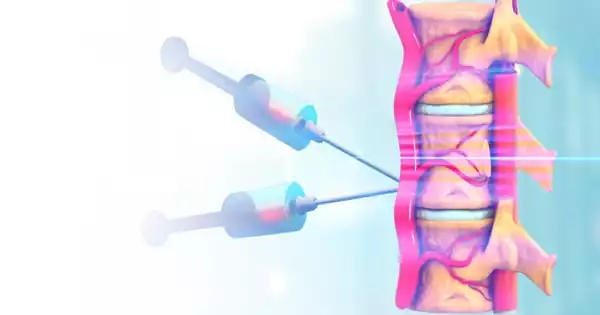A team lead by Rutgers researchers has successfully stabilized an enzyme capable of degrading scar tissue caused by spinal cord injuries and promoting tissue regeneration by using artificial intelligence (AI) and robotics to build therapeutic proteins.
The work, which was just published in Advanced Healthcare Materials, describes the team’s groundbreaking stabilization of the enzyme Chondroitinase ABC (ChABC), which offers new hope to patients suffering from spinal cord injury.
A team of researchers led by Rutgers University discovered a way to combine artificial intelligence and robotics to create therapeutic proteins that, after triggering a domino effect, aid in the degradation of scar tissue generated after a spinal cord injury, or SCI. Scar tissue caused by SCI, as we discussed last month, can operate as a blockage blocking nerve tissue regeneration. While scar tissue preserves the damage site, it limits the afflicted person’s ability to regulate some or all of their body. This holds some hope for SCI patients who would be totally mobile if it weren’t for the presence of extensive scar tissue.
“This is one of the first studies to employ artificial intelligence and robotics to create highly sensitive therapeutic proteins and increase their activity by such a big amount. It is a significant scientific success “Adam Gormley, the project’s primary investigator and an assistant professor of biomedical engineering at Rutgers School of Engineering (SOE) at Rutgers University-New Brunswick, explained the findings. Gormley stated that his research is also influenced by a personal connection to spinal cord damage.
This is one of the first studies to employ artificial intelligence and robotics to create highly sensitive therapeutic proteins and increase their activity by such a big amount. It is a significant scientific success.
Adam Gormley
“I’ll never forget arriving at the hospital and finding that a close college friend was paralyzed from the waist down after a mountain bike accident,” Gormley recalled. “The therapy we’re working on could one day help folks like my friend reduce the scar on their spinal cords and regain function. This is a terrific incentive to get out of bed in the morning and fight for the advancement of knowledge and potential therapy.”
Shashank Kosuri, a biomedical engineering Ph.D. student at Rutgers SOE and the study’s lead author, stated that spinal cord injuries, or SCIs, can have a significant influence on patients’ and their families’ physical, psychological, and socioeconomic well-being. A secondary cascade of inflammation develops extensive scar tissue shortly after a SCI, which can hinder or prohibit nervous tissue recovery.

The enzyme ChABC, which was effectively stabilized in the study, is known to destroy scar tissue molecules and stimulate tissue regeneration, but it is extremely unstable at the human body temperature of 98.6° F and loses all activity within a few hours. To sustain therapeutic efficacy, Kosuri emphasized that frequent, costly infusions at very high doses are required.
Synthetic copolymers can wrap around enzymes like ChABC and stabilize them in harsh conditions. The researchers used an AI-driven strategy with liquid handling robotics to synthesize and assess the ability of various copolymers to stabilize ChABC and sustain its activity at 98.6° F.
Instead, the team employed AI in conjunction with liquid handling robotics to assess the capacity of various copolymers to stabilize ChABC, allowing it to withstand the average 98.6° F internal temperature for longer periods of time. While a couple of copolymers would have sufficed, one copolymer combination, in particular, demonstrated the ability to preserve 30% of the enzyme for up to a week. This type of long-lasting ChABC can be considered therapeutic and may aid in the breakdown of existing scar tissue in patients with mobility difficulties due to their SCI.
While the researchers were able to uncover various copolymers that behaved well, Kosuri stated that one copolymer combination retained 30% of the enzyme for up to one week, which is a promising result for patients seeking care for spinal cord injury.
“This is one of the first studies to employ artificial intelligence and robotics to create extremely sensitive therapeutic proteins and enhance their activity by such a big amount. It’s a significant scientific achievement,” Adam Gormley, assistant professor at Rutgers School of Engineering and the study’s primary investigator, told Rutgers reporters. “The therapy we’re working on could one day assist folks like my friend to minimize the scar on their spinal cords and regain function.” This is a terrific incentive to get out of bed in the morning and fight for the advancement of knowledge and potential therapy.”
















